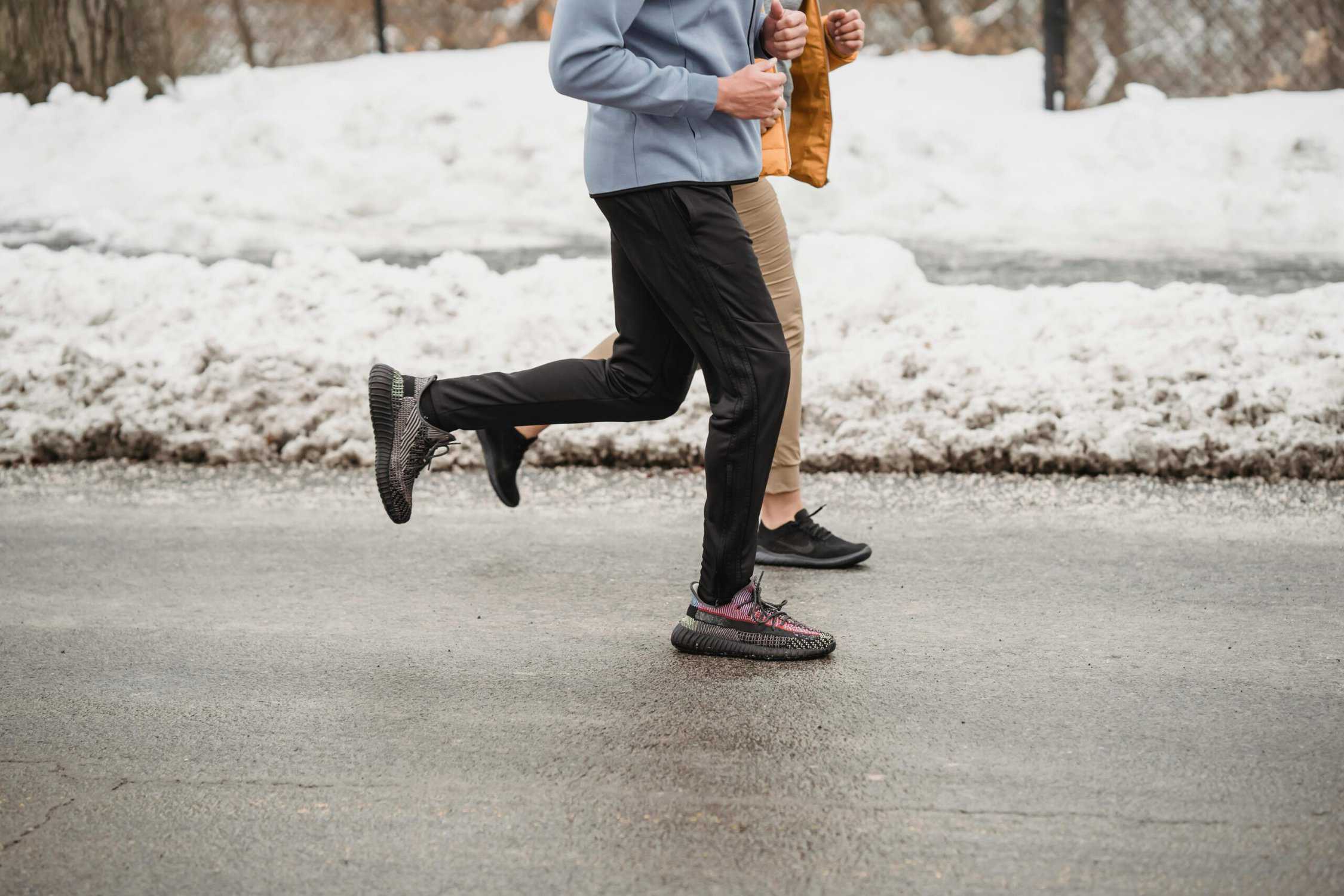
If you run more than a few months, chances are you have been faced with the question: When I should buy new shoes?
I work in a local run specialty store and every day I am asked: how long does my shoe last?
The answer might surprise you! First, it’s not every 400 miles. That is a ballpark answer, but it differs for every person.
Some people can get 1,000, and some people get 200. It depends on the individual. Don’t immediately get rid of your shoes at 400 miles if you still feel good.
The short answer
If you hurt and haven’t done anything differently in your training, it’s probably the shoes.
The long answer
There is no scientific proof that running shoes should be retired after 400 miles. Four hundred miles is the average, but many factors play a role such as:
- Where you run (harder ground and cold can break down a shoe faster)
- Your weight and how hard you hit the ground (causes the materials to break down quicker)
- Your form: If your form hits at exact points, you’ll break down those points on the shoes much faster. For instance, I land very far on my toes, but because I put a lot of pressure in pinpointed areas of a shoe, my shoes break down the quickest there. Sure half of the shoe is usable, but it’s not the half I use.
How to tell if you need new shoes
First, you’re Googling: Have my running shoes lost their cushioning? If you’re asking the internet and unsure, then your shoes have probably lost their cushioning.
But here are some other ways:
You’ve run a lot in the shoes
If you’ve spent at least 6 months in a single pair of shoes, they are probably reaching their limit.
If you can’t remember, a good way to help is to write the date on the side of the shoes. It’s unnecessary to calculate the exact mileage of every pair of shoes you own. By knowing the date you bought them, you should be able to roughly estimate how many miles you’ve run in them. 401 miles versus 399 does not matter.
Your body hurts and you haven’t done anything differently
As indicated earlier, if you haven’t done anything different but your body aches, and nothing feels good, your shoes are probably worn out.
You can visibly twist your shoes
Your running shoes shouldn’t be flexible. If you if you can bend and twist them, then they have probably lost their cushioning. Even brand new racing flats are hard to twist and bend (This is also why you shouldn’t purchase a flexible shoe for distance running to begin with).
You flip your shoes over and visibly see tread worn out
If you flip your shoe over and see a hole in it or worn through the tread, it’s probably worn out. This is what most people envision as a “worn out shoe,” but just because you can’t visibly see wear marks doesn’t mean your shoes aren’t worn out.
So now what?
As someone who works in a running specialty store, I always recommend getting fitted for shoes. Your feet and body change. That being said, if the shoe has worked for you and the model is the same there is no sense in changing. Boring? Yes. Safe? Yes. Healthy? Also yes.
Just keep in mind, every year styles are updated and changed. This could mean they fit differently, sizing is different, or they just “feel” different. Updates typically work for the majority of runners, but that doesn’t mean 100%.
For instance, last year many models of Asics were running almost an entire size short. If you didn’t know that and ordered the same size, they wouldn’t fit appropriately!
Contrary to popular belief, current styles and models of shoes are almost never cheaper online. Older styles and models of shoes might be cheaper but they will also last less time. If a shoe sits in a warehouse for long periods of time, it’s more likely to break down quickly.
Hopefully, you are able to get as many miles out of your running shoes as possible (staying healthy of course).
Hollie Sick is an avid runner who’s completed more than 40 half marathons. Read her blog, or follow her on Facebook.





